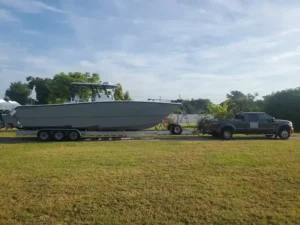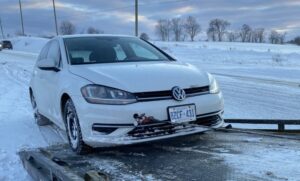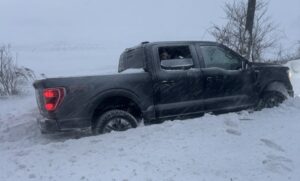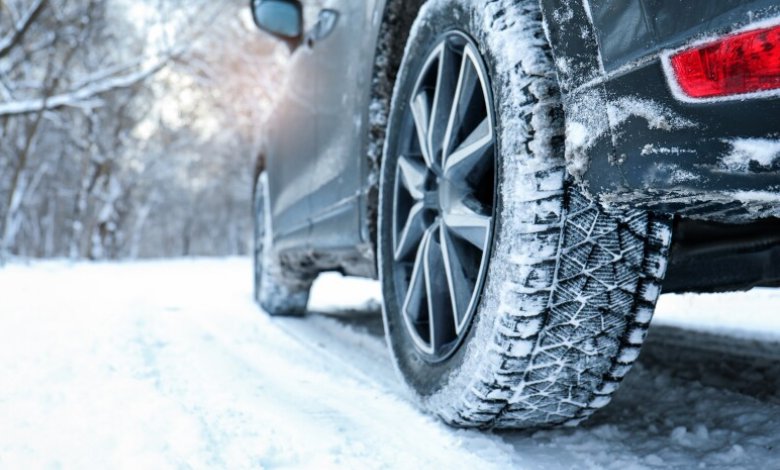The transition from the vibrant colours of a brisk Aurora fall to the deep snow and bone-chilling cold of an Ontario winter is dramatic. For drivers in the York Region, winter is more than just a season; it is a serious test of preparedness, skill, and—most importantly—vehicle readiness. A breakdown on Leslie Street in a blizzard, or a car refusing to start in a Newmarket parking lot at -20°C, is not just an inconvenience; it can quickly become a dangerous situation.
At Pars Towing, a leading towing and recovery service proudly serving Aurora and the wider Ontario community, we see the consequences of poor preparation every single winter. Dead batteries, frozen engines, vehicles stuck in ditches due to inadequate traction—these are preventable incidents. This detailed guide is designed to empower you with the knowledge and steps necessary to thoroughly and effectively winterize your vehicle, ensuring your safety and reliability throughout the coldest months.
We will walk you through a complete, ten-point winterization strategy, covering everything from rubber compound technology to the essential contents of your emergency kit. Mastering how to winterize your vehicle is the most critical preventative maintenance step you can take.
- Learn More >>>>How do I get a tow truck?
Section I: The Foundation of Winter Safety – Tires and Traction
Your tires are the only part of your vehicle touching the road. Their condition and type determine your stopping distance, steering response, and ability to handle snow and ice. This is arguably the most crucial step in how to winterize your vehicle for an Ontario climate.
1. The Winter Tire Mandate – A Safety Investment, Not an Option
In Canada, especially in areas like Aurora that experience significant snowfall and consistently cold temperatures, winter tires (often called snow tires) are a non-negotiable safety feature.
- The 7°C Rule: All-season tire rubber begins to harden and lose elasticity and grip once the temperature drops below 7 degrees Celsius. Winter tire compounds, however, are specifically formulated with more natural rubber and silica to remain soft and flexible even in extreme sub-zero conditions.
- Tread Design: Winter tires feature unique tread patterns with deeper, wider grooves to evacuate slush and snow, and thousands of tiny slits called sipes. These sipes act like tiny gripping edges that bite into ice and hard-packed snow, dramatically increasing traction and shortening stopping distances.
- The Snowflake Symbol: Always look for the Three-Peak Mountain Snowflake (3PMSF) symbol on the sidewall, which indicates the tire has met minimum performance standards for severe snow conditions.
- Local Advantage: While winter tires are not legally mandatory in Ontario (as they are in Quebec), Pars Towing strongly recommends them. The benefit of increased safety, control, and reduced risk of needing an emergency winch-out from a ditch far outweighs the cost.
2. Tire Pressure and Tread Depth Checks
Cold air causes tire pressure to drop. A five-degree drop in air temperature can result in a one PSI (pound per square inch) pressure decrease.
- Regular Monitoring: Check your tire pressure at least once a month using a reliable gauge, ideally in a heated garage. Inflate them to the manufacturer’s recommended PSI (found on the sticker inside your driver’s side door jamb, not the number on the tire’s sidewall).
- Tread Depth: For winter driving, sufficient tread depth is critical. While the legal minimum in Ontario is 1.6 mm (or 2/32 of an inch), most experts recommend at least 4/32 of an inch for safe winter traction. An easy Canadian check is the Quarter Test: place a quarter into the tread groove with the caribou’s nose pointing down. If the tread covers any part of the caribou’s nose, your tread depth is likely sufficient for winter. If the whole nose is exposed, it is time for new tires.
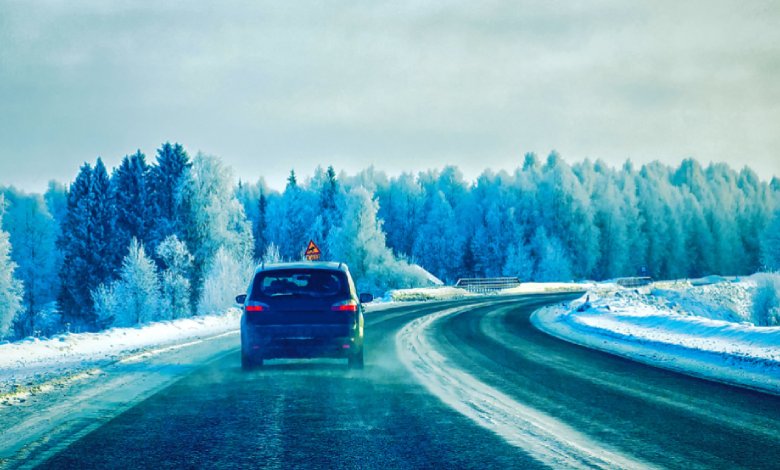
- Learn More >>>>HOW TO JUMP START A NISSAN LEAF
Section II: The Engine and Electrical System – Battling the Freeze
The deep freeze of an Aurora night puts enormous stress on your vehicle’s heart and nervous system: the engine and the battery. Proper fluid and battery maintenance are essential for answering the question: How to winterize your vehicle successfully?
3. Battery Health – The Cold-Weather Killer
A car battery can lose up to 50% of its strength at $ -18^\circ\text{C}$, yet the engine needs twice as much power to start in the cold. This is why most winter roadside service calls involve a dead battery.
- Get It Tested: If your battery is three years old or more, have a professional test its Cold Cranking Amps (CCA) before winter begins. A weak battery will not survive the first major cold snap.
- Clean Terminals: Inspect the battery terminals for white or blue-green corrosion. This buildup restricts electrical flow. Clean the terminals with a wire brush and a mixture of baking soda and water.
- Block Heater: If you own a diesel engine, or live in a rural area where temperatures regularly drop below $ -20^\circ\text{C}$, investing in a block heater is highly recommended. Plugging it in for a few hours before starting warms the engine, making it easier to turn over and drastically reducing wear.
4. Critical Fluid Checks – Antifreeze, Oil, and Washers
Every fluid in your vehicle needs to be winter-ready.
- Coolant/Antifreeze: The cooling system needs an optimal blend of water and antifreeze (typically a 50/50 mix) to prevent the coolant from freezing and cracking your engine block. Have your mechanic test the freeze point of your coolant and adjust the ratio if necessary.
- Engine Oil: Check your owner’s manual for the recommended winter oil viscosity. Modern engines often require lighter weight (lower viscosity) oil, such as 5W-30 or 0W-20, as the first number indicates how the oil flows in cold temperatures. Thicker oil (like 10W-30) turns into sludge in extreme cold, making it incredibly hard for the engine to start.
- Windshield Washer Fluid: Do not use summer washer fluid, which can freeze instantly on your windshield when you spray it, leading to a sudden and dangerous loss of visibility. Switch to an Arctic-rated, low-temperature formula that can withstand temperatures down to $ -40^\circ\text{C}$.
Section III: Visibility, Heating, and Comfort
In an Ontario winter, visibility and heat are not luxuries; they are fundamental safety requirements.
5. Wiper Blades and Defrosters – Seeing the Road
Salt, slush, and ice can destroy standard wiper blades quickly.
- Winter Blades: Replace your standard wiper blades with heavy-duty winter blades that feature a protective rubber boot to prevent ice and snow buildup on the blade frame, ensuring consistent contact with the glass.
- Check the Defrosters: Test your front and rear defrosters (and mirror defrosters, if equipped). If the heat or air flow is weak, you may need a new cabin air filter or a heating system check. If your rear defroster lines are failing, have them repaired immediately.
- Headlight Clarity: Oxidized or cloudy plastic headlight lenses drastically reduce light output. Use a headlight restoration kit to clean them and maximize your visibility on the often-darker, cloud-covered winter roads.
- Learn More >>>>How To Change A Flat Chevy Tire
6. Door Seals and Locks – Avoiding the Freeze-Up
Water that seeps into door seals and locks can freeze solid overnight, locking you out of your car.
- Lubricate Seals: Use a silicone-based spray or rubber care stick on the rubber door and trunk seals. This prevents them from sticking or freezing to the car body.
- Lubricate Locks: Apply a small amount of graphite lubricant to the door lock cylinders. Never pour water or use excessive heat to unfreeze a lock, as this can cause further damage. Keep a bottle of lock de-icer with you (in your pocket or purse), not inside the vehicle.
7. Full Gas Tank and Fuel Lines
Always aim to keep your fuel tank at least half full during the winter. This is a simple but important step in how to winterize your vehicle.
- Preventing Condensation: Keeping the tank full minimizes the air space inside, which reduces condensation. Condensation can lead to water droplets freezing in your fuel line or, worse, in the fuel pump, resulting in a costly service call.
- Fuel Line Antifreeze: Consider adding a bottle of gas line antifreeze (fuel de-icer) to your tank every time you fill up in the coldest months to absorb any moisture in the fuel system.
Section IV: Preparedness and Emergency Protocol
Even with a perfectly maintained vehicle, an unexpected event can leave you stranded. Your winterization plan must include an emergency response strategy.
8. The Essential Winter Emergency Kit
In a vehicle, an emergency kit is the difference between a minor inconvenience and a potential crisis. Keep the following items in a waterproof bag in your trunk:
- Traction and Digging: A small folding snow shovel and a bag of abrasive material (sand, kitty litter, or traction mats) to place under slipping tires. Never use road salt, as it promotes rust.
- Visibility and Signals: Booster cables, road flares or reflective warning triangles, and a bright, reflective vest. A fully charged flashlight (preferably LED) with extra batteries.
- Warmth and Survival: A thick blanket or sleeping bag, extra clothing (hat, gloves, scarf, wool socks), non-perishable food (protein bars, dried fruit), and bottled water. A survival candle and matches (to provide a small amount of heat without draining the battery).
- Essentials: First-aid kit, a cell phone power bank/charger, and a few small tools (pliers, screwdriver, adjustable wrench).

- Learn More >>>>Towing a Ford Mustang Mach-E!
9. Winter Driving Habits – The Human Element
Vehicle preparation is only half the battle. Adjusting your driving style is the other.
- Increase Following Distance: Increase the distance between your vehicle and the one in front of you. Stopping distances on snow and ice can be up to ten times longer than on dry pavement.
- Slow and Steady: Avoid sudden movements—rapid acceleration, abrupt braking, or quick steering changes—which can trigger a skid. Pretend there is an egg under your accelerator and brake pedal.
- Know Your Skids: If you start to skid, steer gently into the skid (the direction you want the front of the car to go) and avoid slamming the brakes.
10. Schedule a Professional Winter Checkup
While many steps in how to winterize your vehicle can be done at home, a comprehensive inspection by a trusted mechanic is invaluable.
- Brake Inspection: Slick roads demand perfect brakes. Have pads, rotors, and brake fluid checked to ensure maximum stopping power.
- Exhaust System Check: A leaky exhaust pipe can allow deadly carbon monoxide to enter the vehicle cabin, especially if the tailpipe becomes blocked by snow. Have your system inspected for cracks and rust.
- Belts and Hoses: Cold temperatures can make rubber brittle. Have your mechanic inspect all belts and hoses for cracks or bulges that could lead to a sudden failure.
- Learn More >>>>BEST cars for towing 2025!
Pars Towing: Your Roadside Partner in Aurora
By following these ten steps on how to winterize your vehicle, you dramatically decrease your risk of a winter breakdown and significantly increase your safety on Ontario roads.
However, accidents and emergencies can still happen. If you find yourself in need of assistance—a battery boost in the cold, a flat tire on the side of the highway, or requiring our specialized winching service after sliding into a ditch—Pars Towing is on standby 24 hours a day, 7 days a week.
Our fleet is equipped with the heavy-duty gear and trained operators necessary to handle the worst of the Aurora winter. Don’t face the cold unprepared. Winterize your vehicle, pack your emergency kit, and drive with the peace of mind that comes from knowing you are prepared and that expert help is only a call away.
Drive safe this winter. If you need us, Pars Towing is here

